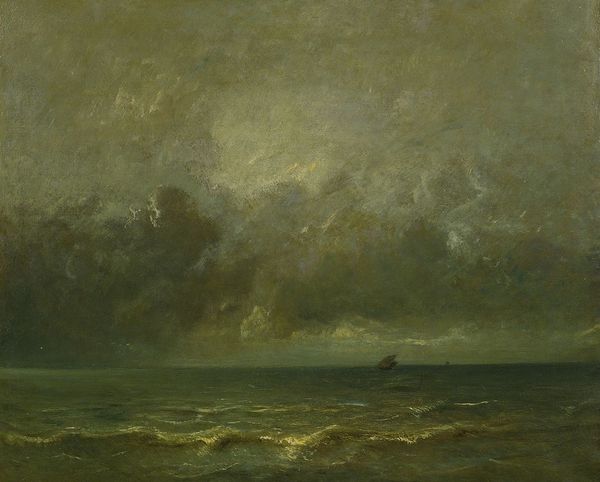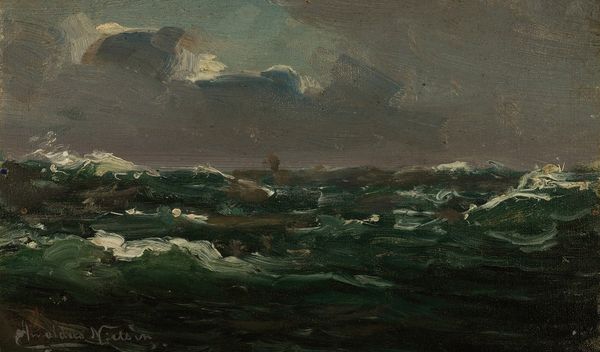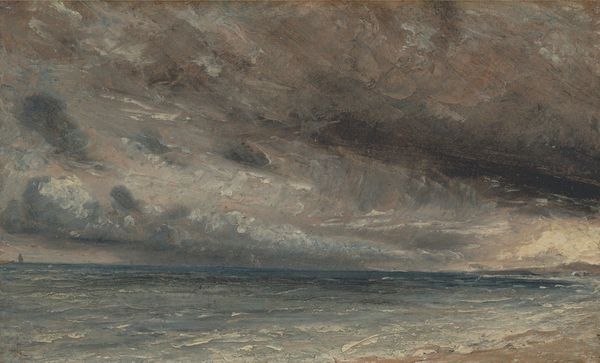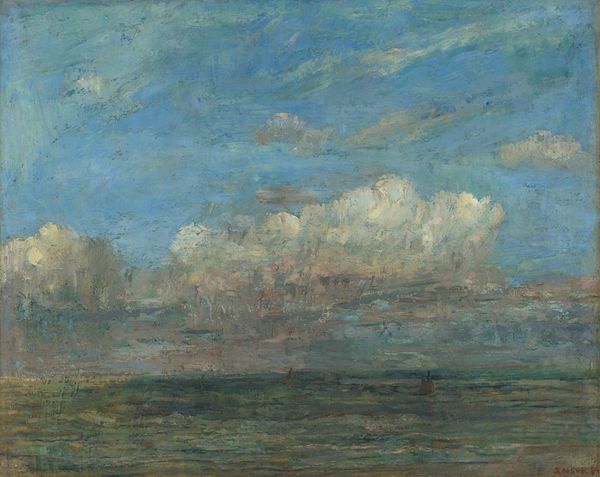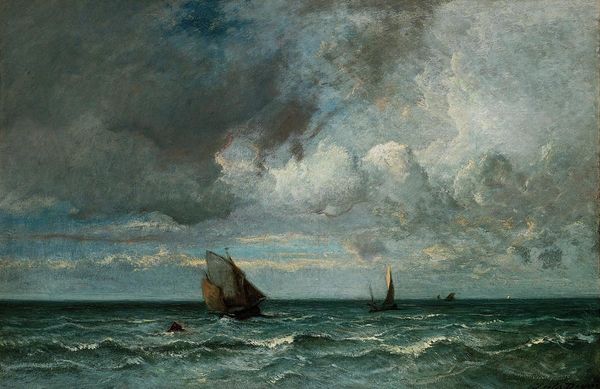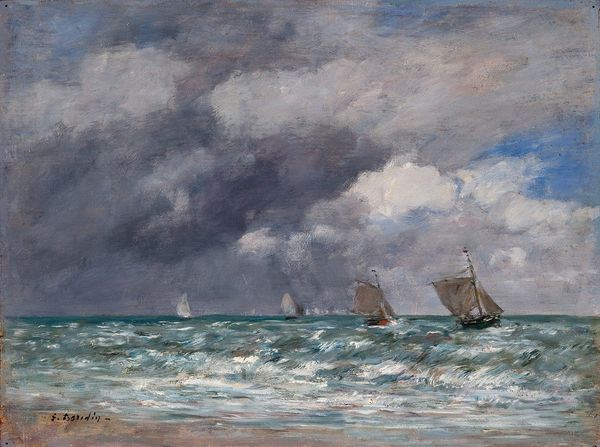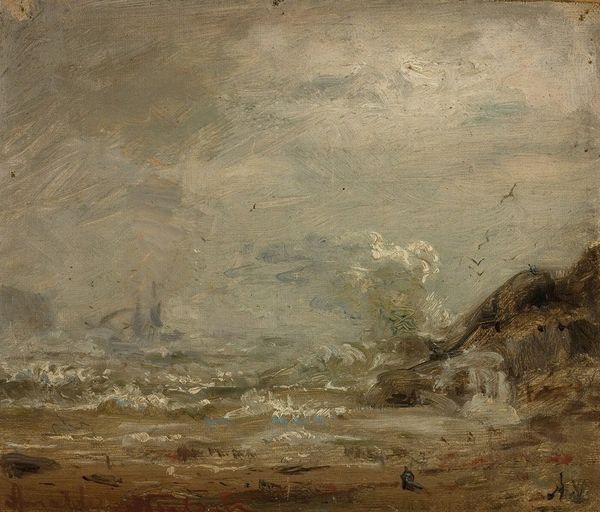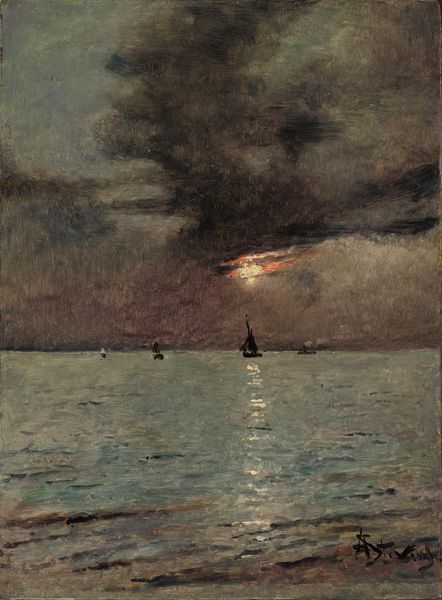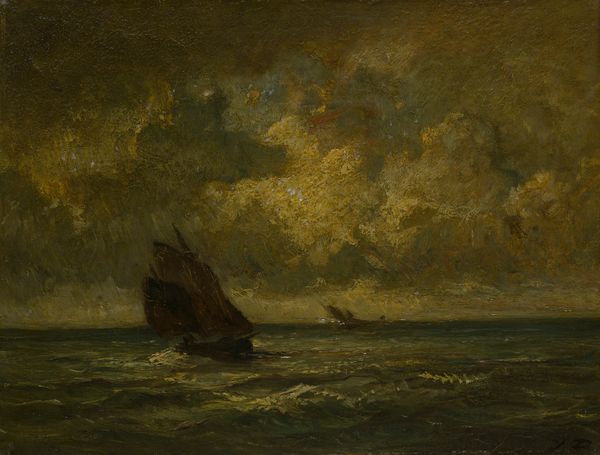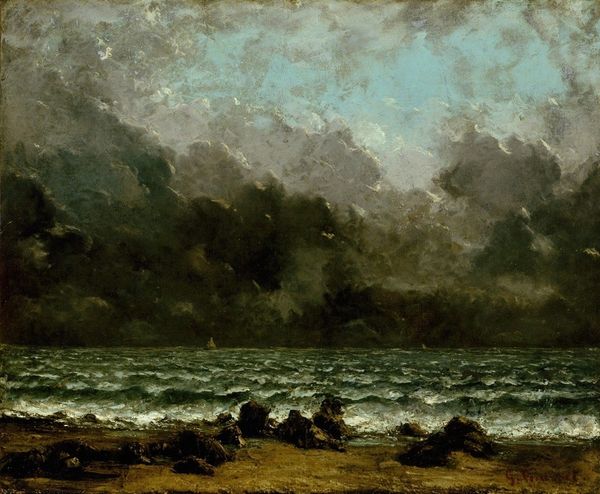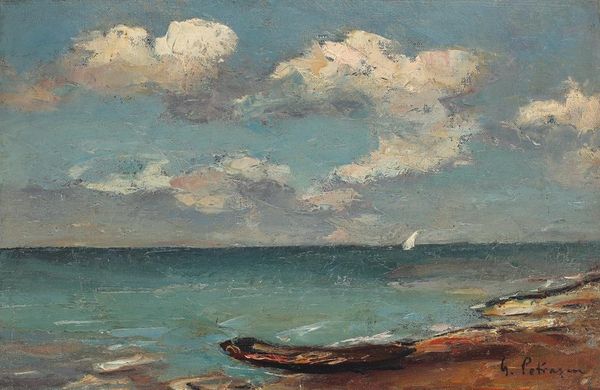
Copyright: Public Domain: Artvee
Editor: We're looking at "The Coast at Trouville" by Eugène Boudin, estimated to have been created between 1865 and 1900 using oil paint. I'm struck by how the turbulent sky seems to dominate the canvas; it feels heavy, almost oppressive. What do you see in this piece, looking at it purely from its formal elements? Curator: Precisely. Ignoring any narrative leanings, consider the dichotomy Boudin establishes. The rough impasto of the cloud formations directly contrasts with the smoother application used for the water. Note the horizon line – how its placement subtly divides the composition, setting up a visual tension between the elements. Editor: I see that now, especially the impasto. The sky looks thick, almost three-dimensional, while the water is more fluid and blended. But is that contrast enough to hold the whole painting together? It feels like it's almost pulling apart. Curator: It's a calculated risk by Boudin. He understood how these opposing textures could create a dynamic energy. Consider, too, how the limited palette – mostly greys and blues – reinforces the overall somber mood, unified solely through tone rather than through hue or shape. Could a more harmonious balance of pigment and texture be as provocative? Editor: So, the lack of harmony *is* the harmony? I mean, it makes a statement by not settling? Curator: Indeed. The seemingly unfinished quality, the lack of precise detail, serves to heighten the viewer’s awareness of the act of painting itself, of the material reality of the oil on the canvas. He prioritises surface and tone above conventional ideas about the depiction of natural forms. What is the outcome? Editor: Wow. I had initially perceived this as simply a stormy landscape but now it's clear that Boudin isn't just painting a scene; he's investigating the very nature of paint and its capabilities. Thanks, this has opened up so many levels of thought! Curator: Exactly. Seeing past the subject towards material and its structure gives great appreciation to painting.
Comments
No comments
Be the first to comment and join the conversation on the ultimate creative platform.


